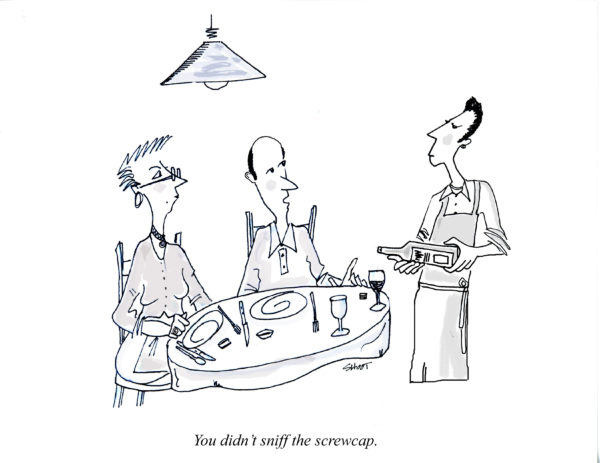 Wine is attended by a surprising amount of ritual. For some, the traditional gestures of service are a comforting reminder that they are participants in an age-old liturgy. For others, they’re pure rigamarole, empty gestures devoid of any useful purpose. As is often the case, the truth lies somewhere between these extremes.
Wine is attended by a surprising amount of ritual. For some, the traditional gestures of service are a comforting reminder that they are participants in an age-old liturgy. For others, they’re pure rigamarole, empty gestures devoid of any useful purpose. As is often the case, the truth lies somewhere between these extremes.
Go back far enough and you’re likely to find a practical reason why, for example, one places a knuckle into the punt of a bottle of Champagne when serving it out, or why a sommelier may hang a shallow silver cup — it’s called a tastevin —- from a lanyard worn ‘round the neck (it was once used to facilitate judging the color of wine in dimly-lit cellars).
Much of the ceremony that once attended restaurant wine service has been streamlined over the years, but at least three elements have remained firmly in place. One is the presentation of the bottle, label front, to the individual who ordered the wine (we’ll call him or her the Point Person); the second is drawing the cork in full view of all, as proof that the wine has not been previously opened and thus possibly tampered with.
Third is the practice of offering said Point Person a small sip, for approval, before filling the glasses of the other guests. Strictly speaking, by the time we’ve gone this far, the table owns its choice of wine and by custom long established must be content with it — unless, that is, Point Person determines that the wine is unsound, meaning that it is somehow faulty, tainted, or otherwise corrupted.
By far the most common actionable fault in wine is what’s known as cork taint, a condition that announces its presence with an unmistakeable smell of wet basement, soggy cardboard, mold and general unpleasant mustiness. Less common (but not exactly rare) is wine that gives the impression that someone had poured out some of the wine and replaced it with water. The source of both faults is the same — the presence of the chemical trichloroanisole (TCA) in the offending winery.
The infection settles in the cork closure and the contamination migrates from there. Wine tainted with TCA is thus commonly referred to as being corked (or corky), whichever way it presents, and it’s why you’ll often see a server sniff the cork once it’s pulled. Contra the uninformed guy in the toon above, screw caps can’t harbor TCA so don’t call for the same smell test.
Cork taint can be egregious or stealthily subtle. The rule of thumb in the wine corner goes as follows: If you even suspect that it’s corked, it’s corked. In which case, you’re wholly justified in (politely) making a stink of your own.
-Stephen Meuse
Taste, talk, and learn about wine this week in the FKC wine corner . . .
THURSDAY, APRIL 11 3-6 PM – A KNUCKLE IN THE PUNT
• 2017 Grand Guilhem Fitou Rosé, $14.95
• 2017 Laurent Perrachon, Morgon Corcelette, $19.95
• 2017 Il Fatalone Colle di Gioia Primitivo, $21.95
FRIDAY, APRIL 12 3-6 PM – PURE RIGAMAROLE
• 2018 G.D. Vajra, “Rosabella” Rosato, $16.95
• 2017 Vincent Paris, Collines Rhodaniennes Syrah “Sélection,” $15.95
• 2016 Domaine Montirius, Vacqueyras “Garrigues,” $25.95